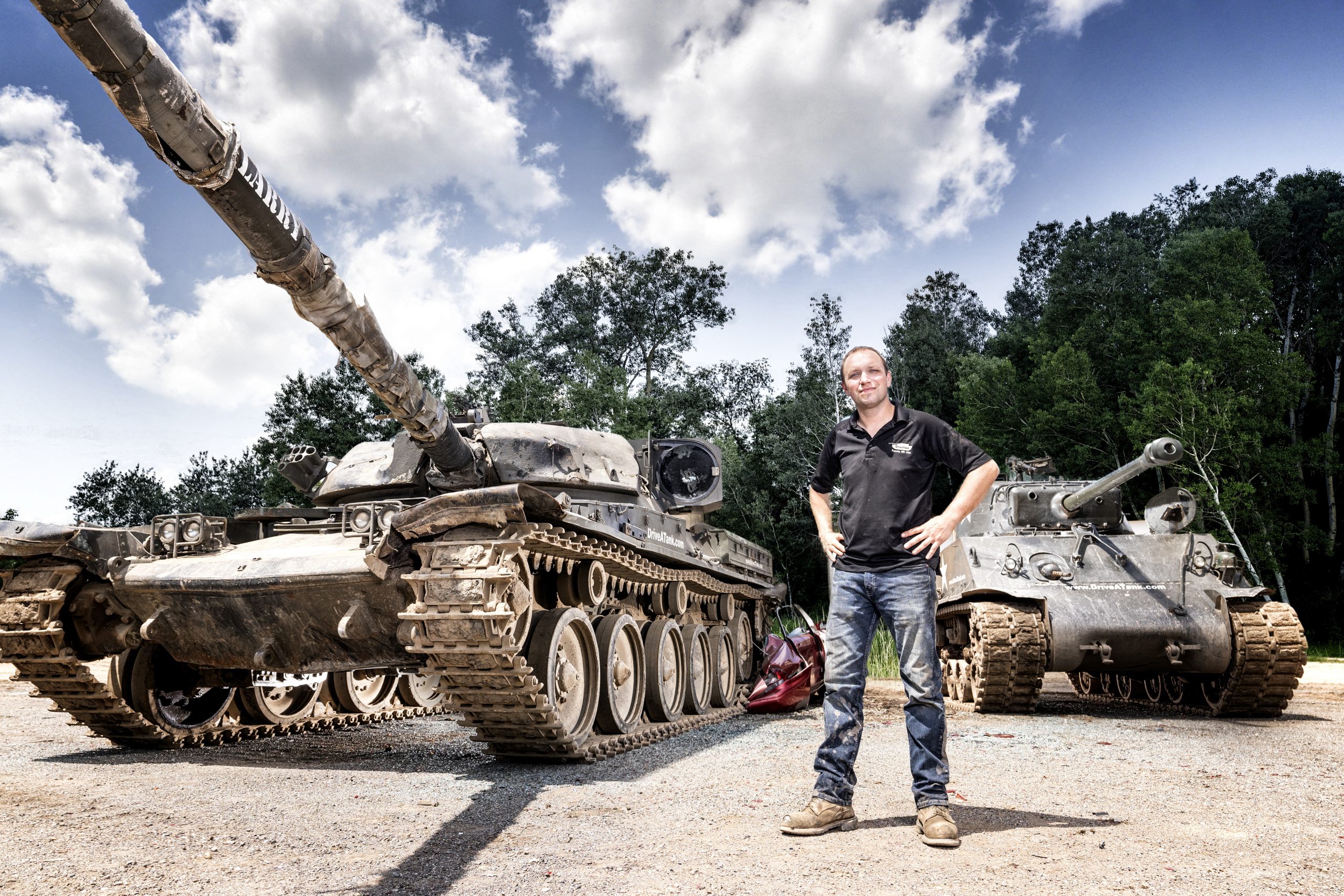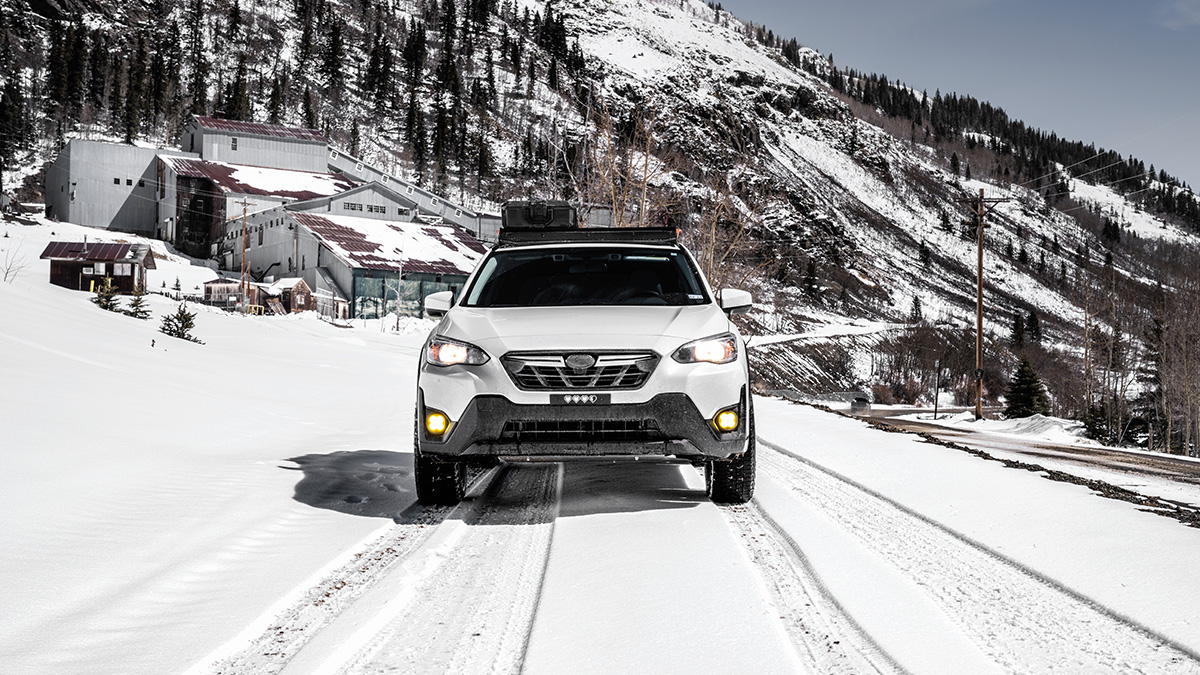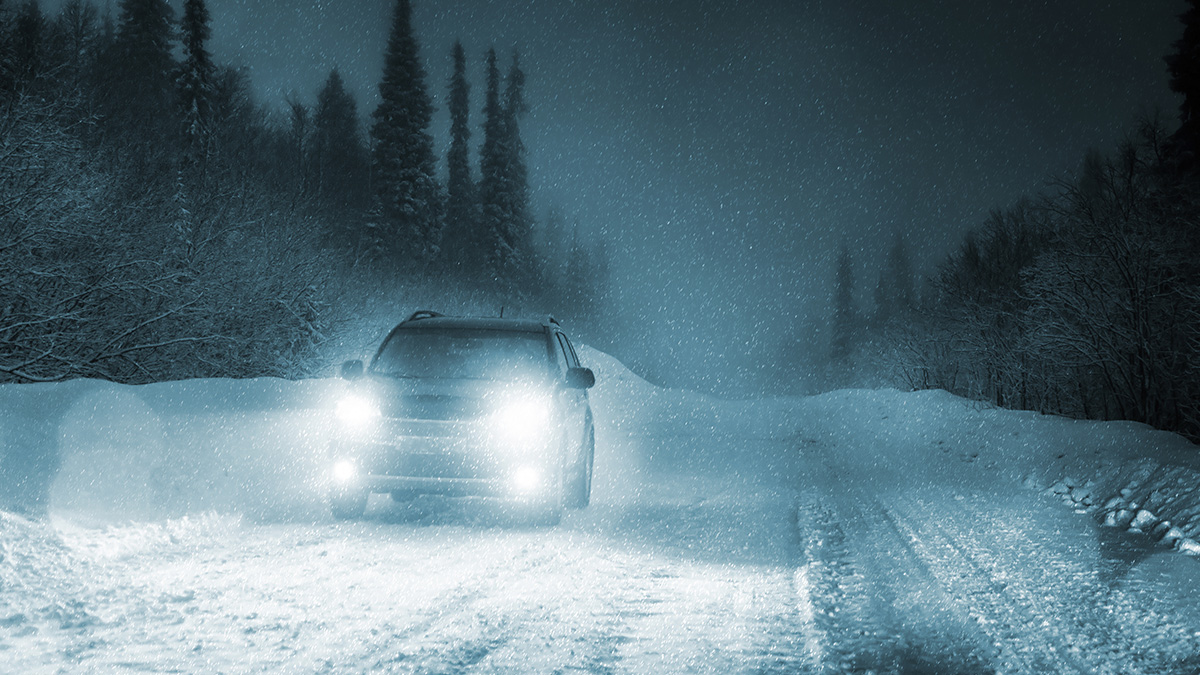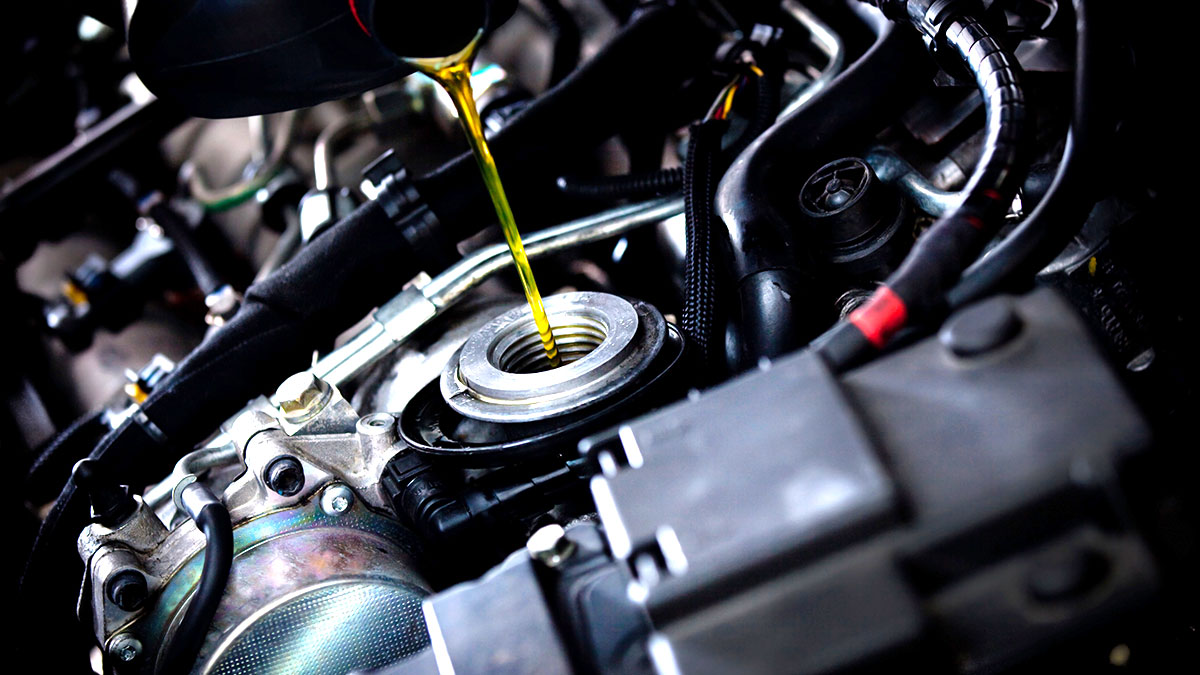Tank enthusiast and business owner Tony Borglum, in his own words.
“Driving tanks started as what was supposed to be a hobby and a fun weekend adventure and a change of pace for a family construction business,” said Borglum. “A friend of ours had given me an Army truck when I was about 15 or 16. That was my project through high school. That’s what really got me hanging out with the military-vehicle crowd and the people, and that’s when I realized that you could buy armored vehicles.”
The birth of Drive A Tank, Inc.
“So, me and my dad got on a plane. We went to England; pretty much drove across the entire country – there were a lot of places that offered tank-driving experiences. And that’s when we kind of realized that, you know, there’s nobody in America offering tank driving at this time, no military experiences like this. We wound up purchasing a few vehicles. Fast forward 10, 12 years and we’re where we are today.”
Universal attraction
“We don’t really have a typical customer,” said Borglum. “We get everybody from bachelor parties looking for an adrenaline rush to engineers. And everybody gets something out of it. Whether you’re a seasoned mechanic or you run construction equipment, you’ll be fascinated that these vehicles are completely different.”
Eclectic vehicle fleet
“Here we see all different vehicles. We see American vehicles. We’ve got Russian vehicles. We’ve got pretty much everything. This is an FV433 Abbot SPG, or ‘self-propelled guns.’ The vehicle might look like a tank and it might drive like a tank, but it is technically not, and that is because it fires the things indirectly, into the sky, down on top of them up to 15 miles away.
“The Abbot’s armed with a 105-millimeter gun. You can see halfway down the barrel. It has a chamber evacuator, and that chamber evacuator is going to take in pressure and then use a Venturi to exhaust the smoke out of the barrel. So, when the breech opens, the crew doesn’t have to breathe the smoke. It also has a muzzle brake at the end to help reduce recoil on the vehicle.
“As we move along the tracks, you can see that it uses suspended return rollers like a typical NATO or Western vehicle. That’s one way you can usually tell a vehicle’s heritage. And, since it is a self-propelled gun, it has crew access from the rear. This thing could set up and fire hundreds of rounds, so it’s important to be able to reload and pull any of your supplies back out quickly and efficiently so you can just keep shooting.”
More than just driving
“A lot of my customers are pretty shocked at how interesting and how fun the education portion actually is. We take everybody through a 15-minute safety briefing and then about a 30- to 40-minute briefing on tanks, why we have them, the history of tanks and some basics about the vehicles they’re going to experience. And a lot of people tell me that was the best part of the day. They almost get an adrenaline rush out of learning about things.”
Mark 10 Chieftain Main Battle Tank
“The next vehicle on our list is a Mark 10 Chieftain Main Battle Tank. It weighs in at 121,000 pounds. It tows a 120-millimeter main gun, the L11, which holds the world record for the longest tank kill of 5,300 meters when it was fitted on a Challenger 1 in the first Gulf War. As you can see, there’s a rather large thermal illuminator on the side of the turret, and that’s going to throw out thermal light that the naked eye cannot see but your thermal sighting systems can. So, basically, in dead night, to the crew, the world is daylight.”
“Something unique to Chieftains and most British tanks is their horseman-style suspension. As you can see, all of the suspension components are on the outside of the vehicle, and that gives more room inside of the vehicle. It also uses a walking beam so that, when it goes over objects, it helps distribute the weight more evenly, which makes it work really good for crushing cars.”
The Sherman Tank
“And the last vehicle we’ll look at today is our M4A2E8 Sherman Medium. It has a 76-millimeter main gun. The idea behind the high-velocity cannon was to engage armored targets. Interesting piece of equipment the other vehicles also lack is the hull-mounted machine gun. The Sherman also has a 50-caliber machine gun on the top of the turret because, throughout World War II, a 50-caliber machine gun was an effective way to shoot down aircraft.”
The best part of the job
“I think one of the most thrilling or exciting parts of the job is when somebody comes and they look at this equipment and they get excited because of the equipment or their experience, and they had no idea. They’ll say, ‘I thought I was just going to come and drive a tank around, and there’s so much more to it.’ And they’re into that.
“I’ve had local customers show me pictures of an American APC and wonder why the people are on top of it. The reality was, it wasn’t safe to be inside of them because, when they got hit by an RPG, the 113’s aluminum armor would melt, so they’d sit on top of them. That way, when they got hit by an RPG, they’d be blown clear.
“And, when you have a customer that says this in front of the other customers, all of a sudden the weight of the equipment that we have here is more valuable to you because you realize you’re standing next to a person who’s life was changed with this stuff, and it’s here. It’s alive. You’re going to touch it. You’re going to drive it, and you’re going to experience it.
“I don’t care who you are. If you’re not fascinated by tanks, you’re doing something wrong.”





Comments
Share: